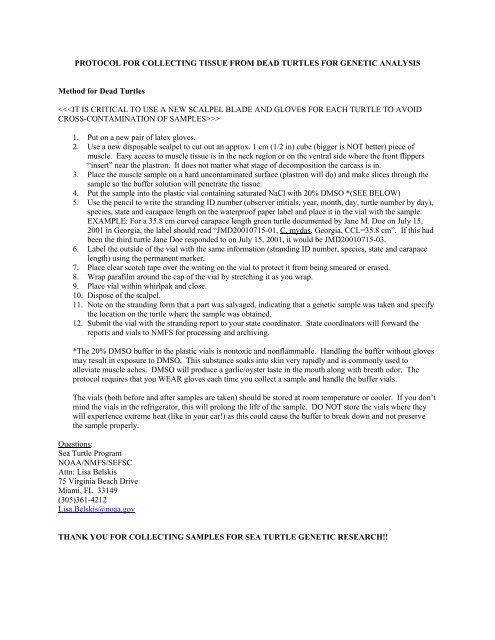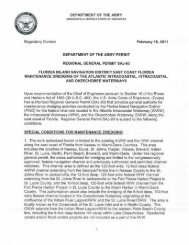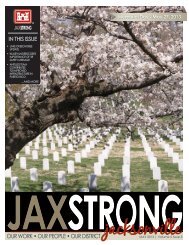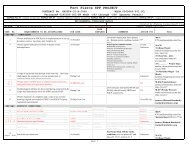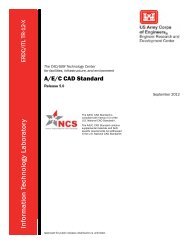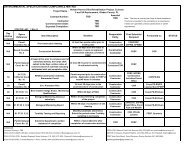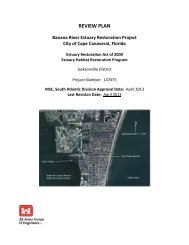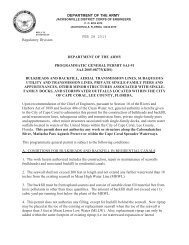Protocol For Collecting Tissue From Turtles For Genetic Analysis
Protocol For Collecting Tissue From Turtles For Genetic Analysis
Protocol For Collecting Tissue From Turtles For Genetic Analysis
Create successful ePaper yourself
Turn your PDF publications into a flip-book with our unique Google optimized e-Paper software.
PROTOCOL FOR COLLECTING TISSUE FROM DEAD TURTLES FOR GENETIC ANALYSIS<br />
Method for Dead <strong>Turtles</strong><br />
<br />
1. Put on a new pair of latex gloves.<br />
2. Use a new disposable scalpel to cut out an approx. 1 cm (1/2 in) cube (bigger is NOT better) piece of<br />
muscle. Easy access to muscle tissue is in the neck region or on the ventral side where the front flippers<br />
“insert” near the plastron. It does not matter what stage of decomposition the carcass is in.<br />
3. Place the muscle sample on a hard uncontaminated surface (plastron will do) and make slices through the<br />
sample so the buffer solution will penetrate the tissue.<br />
4. Put the sample into the plastic vial containing saturated NaCl with 20% DMSO *(SEE BELOW)<br />
5. Use the pencil to write the stranding ID number (observer initials, year, month, day, turtle number by day),<br />
species, state and carapace length on the waterproof paper label and place it in the vial with the sample.<br />
EXAMPLE: <strong>For</strong> a 35.8 cm curved carapace length green turtle documented by Jane M. Doe on July 15,<br />
2001 in Georgia, the label should read “JMD20010715-01, C. mydas, Georgia, CCL=35.8 cm”. If this had<br />
been the third turtle Jane Doe responded to on July 15, 2001, it would be JMD20010715-03.<br />
6. Label the outside of the vial with the same information (stranding ID number, species, state and carapace<br />
length) using the permanent marker.<br />
7. Place clear scotch tape over the writing on the vial to protect it from being smeared or erased.<br />
8. Wrap parafilm around the cap of the vial by stretching it as you wrap.<br />
9. Place vial within whirlpak and close.<br />
10. Dispose of the scalpel.<br />
11. Note on the stranding form that a part was salvaged, indicating that a genetic sample was taken and specify<br />
the location on the turtle where the sample was obtained.<br />
12. Submit the vial with the stranding report to your state coordinator. State coordinators will forward the<br />
reports and vials to NMFS for processing and archiving.<br />
*The 20% DMSO buffer in the plastic vials is nontoxic and nonflammable. Handling the buffer without gloves<br />
may result in exposure to DMSO. This substance soaks into skin very rapidly and is commonly used to<br />
alleviate muscle aches. DMSO will produce a garlic/oyster taste in the mouth along with breath odor. The<br />
protocol requires that you WEAR gloves each time you collect a sample and handle the buffer vials.<br />
The vials (both before and after samples are taken) should be stored at room temperature or cooler. If you don’t<br />
mind the vials in the refrigerator, this will prolong the life of the sample. DO NOT store the vials where they<br />
will experience extreme heat (like in your car!) as this could cause the buffer to break down and not preserve<br />
the sample properly.<br />
Questions:<br />
Sea Turtle Program<br />
NOAA/NMFS/SEFSC<br />
Attn: Lisa Belskis<br />
75 Virginia Beach Drive<br />
Miami, FL 33149<br />
(305)361-4212<br />
Lisa.Belskis@noaa.gov<br />
THANK YOU FOR COLLECTING SAMPLES FOR SEA TURTLE GENETIC RESEARCH!!
<strong>Genetic</strong> Sample Kit Materials – DEAD turtles<br />
• latex gloves<br />
• single-use scalpel blades (Fisher Scientific 1-800-766-7000, cat. # 08-927-5A)<br />
• plastic screw-cap vial containing saturated NaCl with 20% DMSO, wrapped in parafilm<br />
• waterproof paper label, ¼” x 4”<br />
• pencil to write on waterproof paper label<br />
• permanent marker to label the plastic vials<br />
• scotch tape to protect writing on the vials<br />
• piece of parafilm to wrap the cap of the vial<br />
• whirl-pak to return/store sample vial
PROTOCOL FOR COLLECTING TISSUE FROM LIVE TURTLES FOR GENETIC ANALYSIS<br />
Method for Live <strong>Turtles</strong><br />
<br />
1. Turn the turtle over on its back.<br />
2. Put on a new pair of latex gloves.<br />
3. Swab the entire cap of the sample vial with alcohol.<br />
4. Wipe the ventral and dorsal surfaces of the rear flipper 5-10 cm from the posterior edge with the<br />
Betadine/iodine swab.<br />
5. Place the vial under the flipper edge to use the cleaned cap as a hard surface for the punch.<br />
6. Press a new biopsy punch firmly into the flesh as close to the posterior edge as possible and rotate one<br />
complete turn. Cut all the way through the flipper to the cap of the vial.<br />
7. Wipe the punched area with Betadine/iodine swab; rarely you may need to apply pressure to stop bleeding.<br />
8. Use a wooden skewer to transfer the sample from the biopsy punch into the plastic vial containing saturated<br />
NaCl with 20% DMSO *(SEE BELOW)<br />
9. Use the pencil to write the stranding ID number (observer initials, year, month, day, turtle number by day),<br />
species, state and carapace length on the waterproof paper label and place it in the vial with the sample.<br />
EXAMPLE: <strong>For</strong> a 35.8 cm curved carapace length green turtle documented by Jane M. Doe on July 15,<br />
2001 in Georgia, the label should read “JMD20010715-01, C. mydas, Georgia, CCL=35.8 cm”. If this had<br />
been the third turtle Jane Doe responded to on July 15, 2001, it would be JMD20010715-03.<br />
10. Label the outside of the vial with the same information (stranding ID number, species, state and carapace<br />
length) using the permanent marker.<br />
11. Place clear scotch tape over the writing on the vial to protect it from being smeared or erased.<br />
12. Wrap parafilm around the cap of the vial by stretching it as you wrap.<br />
13. Place vial within whirlpak and close.<br />
14. Dispose of the biopsy punch.<br />
15. Note on the stranding form that a part was salvaged, indicating that a genetic sample was taken and specify<br />
the location on the turtle where the sample was obtained.<br />
16. Submit the vial with the stranding report to your state coordinator. State coordinators will forward the<br />
reports and vials to NMFS for processing and archiving.<br />
*The 20% DMSO buffer in the plastic vials is nontoxic and nonflammable. Handling the buffer without gloves<br />
may result in exposure to DMSO. This substance soaks into skin very rapidly and is commonly used to<br />
alleviate muscle aches. DMSO will produce a garlic/oyster taste in the mouth along with breath odor. The<br />
protocol requires that you WEAR gloves each time you collect a sample and handle the buffer vials.<br />
The vials (both before and after samples are taken) should be stored at room temperature or cooler. If you don’t<br />
mind the vials in the refrigerator, this will prolong the life of the sample. DO NOT store the vials where they<br />
will experience extreme heat (like in your car!) as this could cause the buffer to break down and not preserve<br />
the sample properly.<br />
Questions:<br />
Sea Turtle Program<br />
NOAA/NMFS/SEFSC<br />
Attn: Lisa Belskis<br />
75 Virginia Beach Drive<br />
Miami, FL 33149<br />
(305)361-4212<br />
Lisa.Belskis@noaa.gov<br />
THANK YOU FOR COLLECTING SAMPLES FOR SEA TURTLE GENETIC RESEARCH!!
<strong>Genetic</strong> Sample Kit Materials – LIVE turtles<br />
• latex gloves<br />
• alcohol swabs<br />
• Betadine/iodine swabs<br />
• 4-6 mm biopsy punch – sterile, disposable (Moore Medical Supply 1-800-678-8678, part #0052442)<br />
• plastic screw-cap vial containing saturated NaCl with 20% DMSO, wrapped in parafilm<br />
• wooden skewer<br />
• waterproof paper label, ¼” x 4”<br />
• pencil to write on waterproof paper label<br />
• permanent marker to label the plastic vials<br />
• scotch tape to protect writing on the vials<br />
• piece if parafilm to wrap the cap of the vial<br />
• whirl-pak to return/store sample vial


